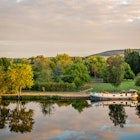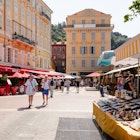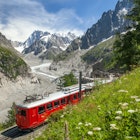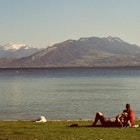
Sep 8, 2025 • 6 min read
From France's Les 3 Vallées to the après-ski of Whistler, here's our pick of the world's best places for snowboarders.

Sep 8, 2025 • 6 min read
From France's Les 3 Vallées to the après-ski of Whistler, here's our pick of the world's best places for snowboarders.

Aug 18, 2025 • 9 min read
You can admire them from afar, but for full immersion in France's châteaux, nothing beats staying the night and dining like royalty.

Jul 30, 2025 • 6 min read
Lonely Planet contributor Laura Motta shows us how she threw together a quick, inexpensive weekend in Bordeaux, France.

Jul 23, 2025 • 6 min read
French pharmacies are a treasure trove of wellness and beauty products.

Jul 9, 2025 • 9 min read
A trip to France doesn't have to be a luxury bucket list item. These handy tips make traveling there (and enjoying it ) so approachable, no matter the budget.

Jul 9, 2025 • 8 min read
Top canal boat trips in France and how to plan and book them.

Jul 8, 2025 • 7 min read
Shopping at a supermarket overseas can be a little daunting if you're new to the culture. Here's how to get the most out of a market in France.

Jun 26, 2025 • 11 min read
Exploring France by train is a travel experience second to none. Here are 8 of our favorites and how you can book them.

Jun 24, 2025 • 7 min read
Bike through Paris and beyond with our pick of France's best cycling routes that start from Notre Dame.

May 28, 2025 • 9 min read
From soaring alpine peaks to coastal trails, France has hiking routes to match every ability. These are the best.

May 26, 2025 • 10 min read
The French Alps are spectacular in summer. Follow our week-long itinerary to experience the best France’s alpine paradise after the snow melts.

May 21, 2025 • 13 min read
Whether you want to spend a night or two in a tree house or go glamping at a riverside campground, here are the best places to pitch up in France.

May 21, 2025 • 11 min read
Visit the best museums in France to explore the cultural and political legacy of Europe's top tourist destination through art, artifacts and architecture.

May 20, 2025 • 6 min read
Explore France by car with our favorite road-tripping routes.

May 6, 2025 • 5 min read
Fantastic France has something to offer travelers every month of the year. Here’s a full season-by-season guide.

Apr 30, 2025 • 9 min read
Vichy, in the center of France, is known for its spa treatments and therapeutic waters. Plan your visit with our tips for first-timers.

Apr 16, 2025 • 10 min read
Make the most of your first trip to France with this guide.

Apr 15, 2025 • 8 min read
Here’s how to plan a getaway between two of France's idyllic lakeside destinations.

Apr 15, 2025 • 5 min read
Find medieval architecture, romantic vineyards and fairy-tale charm in France’s most beautiful and intriguing villages.

Mar 31, 2025 • 7 min read
We asked travel writers in France about their favorite under-the-radar vacation destinations. Break away from the crowd at these local holiday spots.

Mar 29, 2025 • 7 min read
With hidden coves, enviable surf spots and glamorous beaches, France is packed with gorgeous coastline.

Mar 13, 2025 • 10 min read
From soaring mountains to sparkling coastlines to medieval hilltop villages, France has something for everyone. Here are 10 places that stand out.